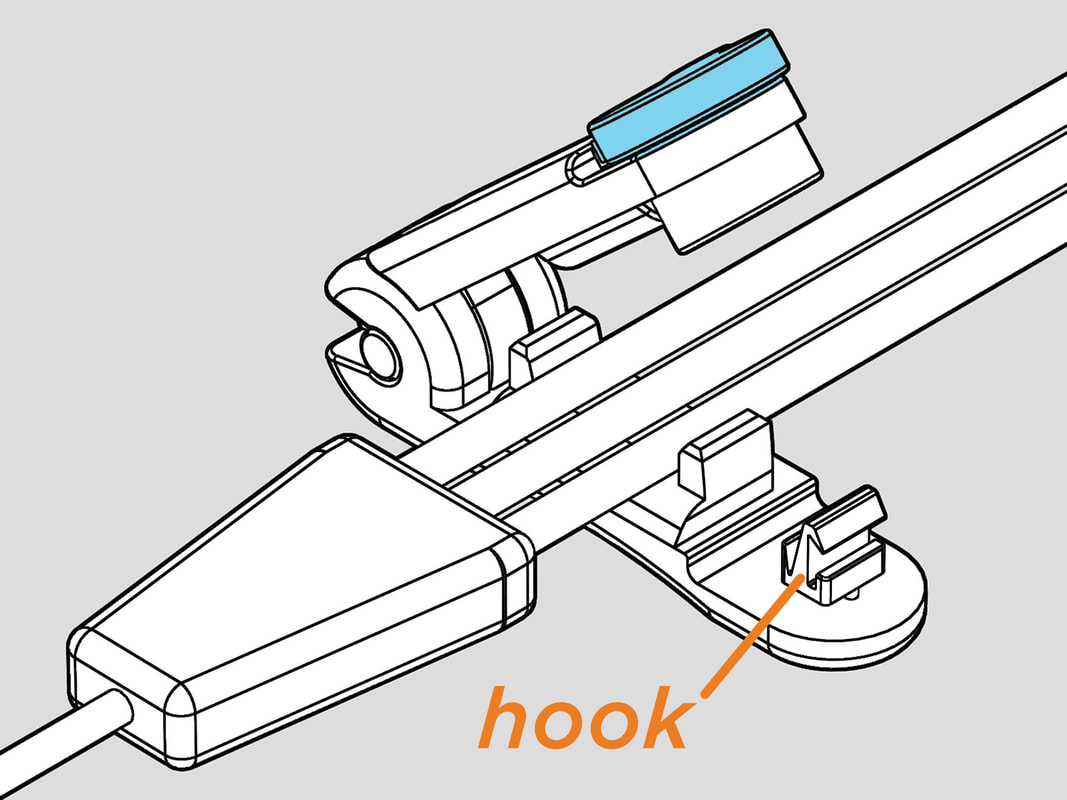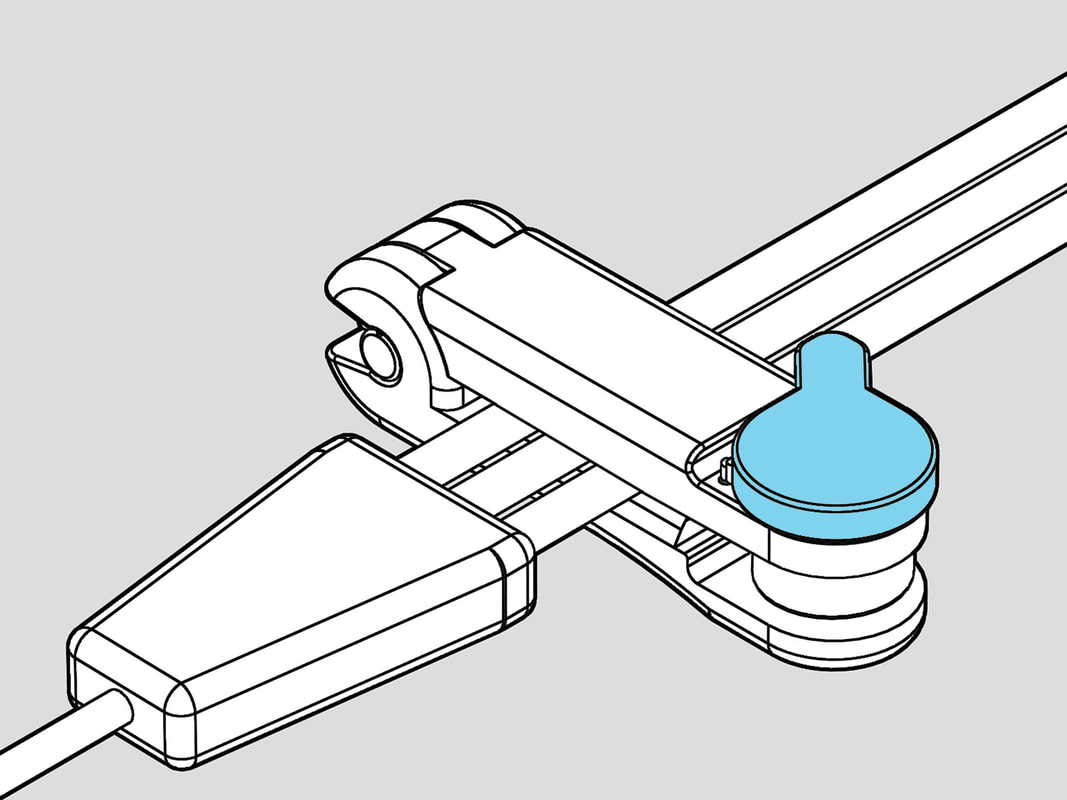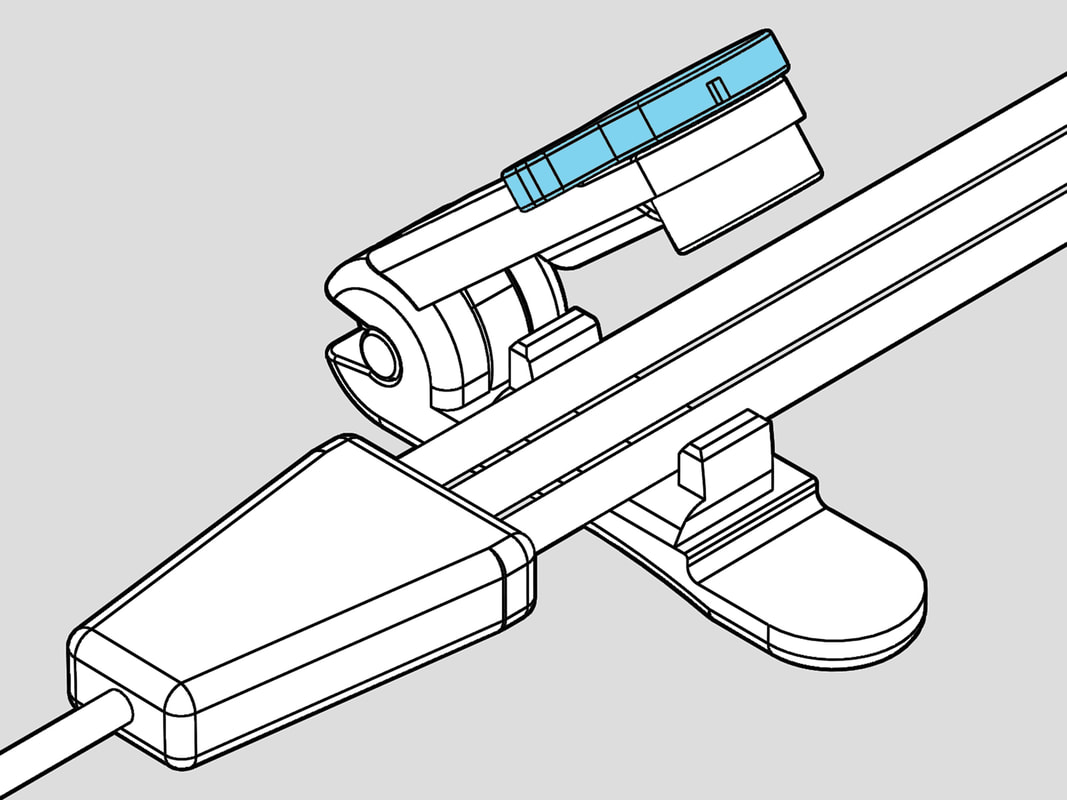PICC AND CENTRAL LINE PROTECTION CLAMP by Neuma Innovations
Introducing a simple anti-tampering device engineered to deter and detect central line abuse by IVDU patients who use their lines to self-inject illicit drugs. The Neuma clamp prevents unwanted flow through the line, alerts care givers to tampering by the patient, and acts as evidence to avoid CLABSI reports.
Introducing a simple anti-tampering device engineered to deter and detect central line abuse by IVDU patients who use their lines to self-inject illicit drugs. The Neuma clamp prevents unwanted flow through the line, alerts care givers to tampering by the patient, and acts as evidence to avoid CLABSI reports.
BACKGROUND
The use of central lines to treat infections related to intravenous drug use is accelerating. Medical facilities are experiencing a dramatic need for tools that deter the abuse of central lines by Opioid Use Disorder patients who use illicit drugs. Additionally, there is an urgency to detect line tampering when it occurs.
PROBLEM
The risks for PICC and central line complications are especially high in persons who abuse illicit intravenous drugs. During hospitalization and after discharge from the hospital, these patients often use their central line to self inject, resulting in line contaminations, infections and overdoses. Furthermore, the concern about line tampering and the reluctance to discharge at-risk patients leads to millions of dollars of medical expenses when patients could otherwise be receiving therapy at home or alternative care facilities.
SOLUTION
Neuma Innovations has developed a catheter safety device to deter and detect the purposeful abuse and accidental errors that dramatically increase hospital costs and harm many patients with central lines.The Neuma Clamp is a Class 1 510(k) exempt device registered with the FDA, and manufactured using medical grade biocompatible plastic.
The use of central lines to treat infections related to intravenous drug use is accelerating. Medical facilities are experiencing a dramatic need for tools that deter the abuse of central lines by Opioid Use Disorder patients who use illicit drugs. Additionally, there is an urgency to detect line tampering when it occurs.
PROBLEM
The risks for PICC and central line complications are especially high in persons who abuse illicit intravenous drugs. During hospitalization and after discharge from the hospital, these patients often use their central line to self inject, resulting in line contaminations, infections and overdoses. Furthermore, the concern about line tampering and the reluctance to discharge at-risk patients leads to millions of dollars of medical expenses when patients could otherwise be receiving therapy at home or alternative care facilities.
SOLUTION
Neuma Innovations has developed a catheter safety device to deter and detect the purposeful abuse and accidental errors that dramatically increase hospital costs and harm many patients with central lines.The Neuma Clamp is a Class 1 510(k) exempt device registered with the FDA, and manufactured using medical grade biocompatible plastic.
|
STEP ONE
Place the lines into the walled cradle. (Note the hook that will hold the clamp closed when engaged.) |
STEP TWO
Pinch the clamp and it will lock shut. Now the lines are protected. |
STEP THREE
Turn the blue knob to open the clamp. This action breaks off the hook and the clamp can't be used again. |
FEATURES AND BENEFITS
• Deter and Detect PICC and Central Line Abuse
• Protect Lines from Contamination
• Improve Patient Safety
• Discharge Patients with More Confidence
• Free up Hospital Beds
• Prevent a CLABSI designation more information >>
• Deter and Detect PICC and Central Line Abuse
• Protect Lines from Contamination
• Improve Patient Safety
• Discharge Patients with More Confidence
• Free up Hospital Beds
• Prevent a CLABSI designation more information >>



